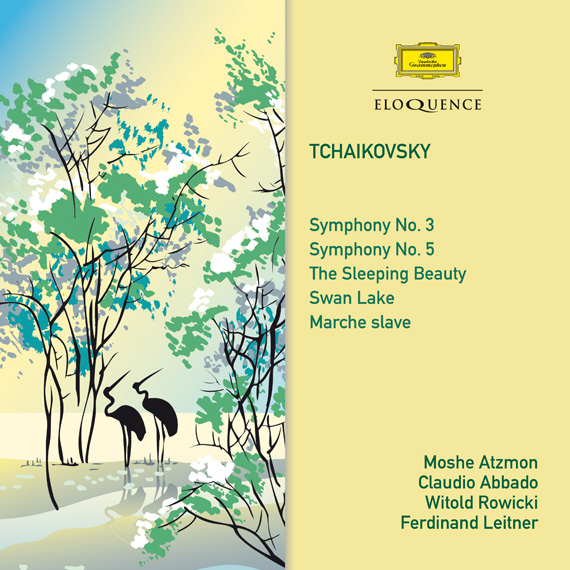A collection of all of Tchaikovsky’s symphonies and ballet suites from the rich archives of Deutsche Grammophon.
All the performances have been justifiably critically appraised. This volume includes the CD premiere of one of Tchaikovsky’s least-known symphonies – the third. Moshe Atzmon’s airborne reading, stunningly recorded in 1973 in Vienna, makes a long-overdue appearance. Rowicki’s accounts of the two popular ballet suites – ‘Swann Lake’ and ‘Sleeping Beauty’ – are expansive and symphonic in their outlook.
PIOTR ILYICH TCHAIKOVSKY
CD 1
Symphony No. 3 in D major, Op. 29 ‘Polish’*
Wiener Symphoniker
Moshe Atzmon
Marche slave, Op. 31
Berliner Philharmoniker
Ferdinand Leitner
The Sleeping Beauty: Suite, Op. 66a
Warsaw National Philharmonic Orchestra
Witold Rowicki
CD 2
Symphony No. 5 in E minor, Op. 64
London Symphony Orchestra
Claudio Abbado
Swan Lake, Op. 20: Suite
Warsaw National Philharmonic Orchestra
Witold Rowicki
* FIRST RELEASE ON CD
Recording Producers: Hans Weber (Swan Lake, Sleeping Beauty); Wolfgang Lohse (Marche slave); Dr. Gerd Ploebsch (Symphony No. 3); Karl Faust, Rainer Brock (Symphony No. 5)
Balance Engineers: Heinz Wildhagen (Swan Lake, Sleeping Beauty); Werner Wolf (Marche slave); Günter Hermanns, Gernot Westhäuser (Symphony No. 3); Günter Hermanns, Wolfgang Werner (Symphony No. 5)
Recording Locations: Philharmonic Hall, Warsaw, 18–19 April 1959 (Swan Lake), 20 & 22 April 1959 (Sleeping Beauty); Jesus-Christus-Kirche, Berlin, Germany, 28 May 1959 (Marche slave); Simmeringer Hof, Vienna, 20–22 May 1973 (Symphony No. 3); Studio Anvil Films, Denham, Buckinghamshire, UK, 2–3 December 1970 (Symphony No. 5)
Remastering Engineer: Chris Bernauer
‘by far the most refined recording of any current version of the Polish Symphony, warmly reverberant but well-enough defined in detail’ (Symphony No. 3) Gramophone, August 1974
‘[Abbado] secures clean, brilliant playing from the LSO in the first movement, finely controlled emotional climaxes in the slow movement … and a strong, urgent but unhysterical account of the finale.’ (Symphony
No. 5) Gramophone, April 1972

